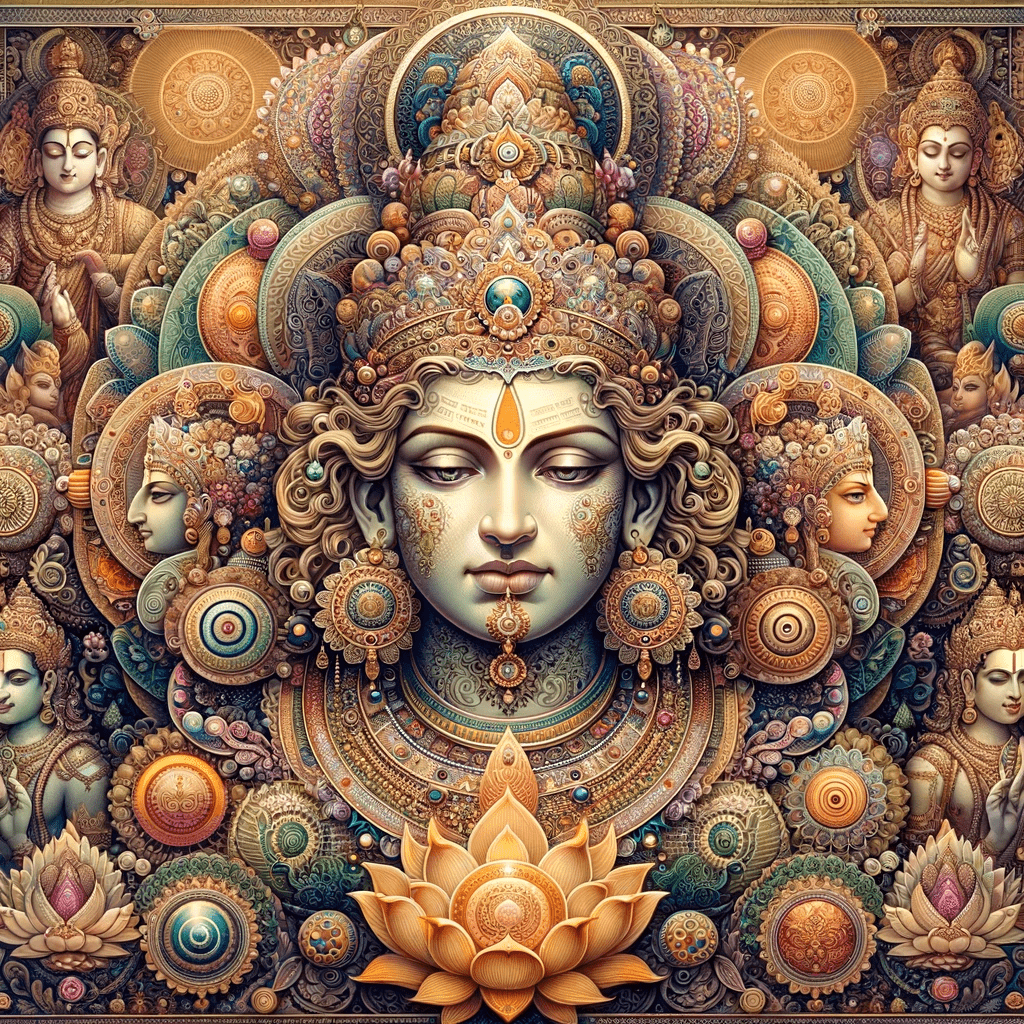Unveiling the Mysteries
In the rich tapestry of Vedic art, every line, curve, and color carries a deeper meaning, a symbolic whisper from the past that speaks of universal truths and profound philosophies. The Symbolism in Vedic Art is not merely about aesthetic appeal but is a visual language that conveys the wisdom of the Vedas, Upanishads, and other sacred texts.
The Essence of Symbolism
Vedic art is a symbolic gateway to the understanding of cosmic principles and the nature of existence. It uses metaphors and allegories to express concepts that are beyond the realm of words. From the deities’ multiple arms to their divine vehicles, from the lotus to the chakra, each symbol is a key to unlocking the deeper knowledge contained within the Vedic worldview.
Deities: Embodiments of Cosmic Functions
The deities, central to Vedic art, are not mere representations of superhuman figures but symbolize various aspects of the divine and the universe. For instance, Lord Shiva’s dance, Nataraja, is a symbol of the cosmic cycles of creation and destruction, while Lord Vishnu’s resting posture on the serpent Ananta signifies the calmness in the preservation of the universe.
The Lotus: A Symbol of Purity
The lotus is ubiquitous in Vedic art and holds a place of honor as a symbol of purity, enlightenment, and rebirth. Its journey from the murky waters to blooming on the water’s surface is likened to the spiritual journey from ignorance to the awakening of the soul.
The Chakra: Wheels of Energy
Often depicted in the background or as part of a deity’s iconography, the chakra represents the spiritual energy centers within the human body. In Vedic art, the chakras serve as a reminder of the inner spiritual journey and the quest for balance and enlightenment.
Colors: The Palette of Emotions
Colors in Vedic art are symbolic too. Blue, often seen adorning deities like Krishna and Shiva, represents the infinite, the divine, and the calmness of the sky and sea. Red, a vibrant and life-affirming hue, symbolizes both sensuality and purity. Each color is selected for its symbolic attributes and the emotions it is meant to evoke.
Sacred Geometry: The Blueprint of Creation
The use of sacred geometry in Vedic art, such as the Sri Yantra, is considered a visual expression of the mathematical principles that underpin the universe. These geometric patterns are meditative tools, aiding the viewer in contemplating the nature of existence and the interconnectivity of the cosmos.
Conclusion
The symbols found in Vedic art are a confluence of beauty and philosophy, offering a multi-layered experience to the beholder. They invite us into a contemplative space, to see beyond the surface and explore the profound spiritual messages encoded within. In the intricate designs and patterns of Vedic art, we find a universal language that connects us to the divine, to each other, and to the very fabric of the cosmos.

